Co Le Pagoda festivals offer a unique glimpse into Vietnam’s rich cultural heritage, blending spiritual traditions with vibrant celebrations. SIXT.VN can help you plan your visit, ensuring a seamless experience from airport transfers to comfortable accommodations, allowing you to fully immerse yourself in the local culture and enjoy the festivities. Explore Vietnamese culture, religious festivals and spiritual practices.
1. What is Co Le Pagoda and Where is It Located?
Co Le Pagoda, also known as Than Quang Tu in its early days, is a prominent Buddhist temple in Nam Dinh province, Vietnam. The exact address is in Truc Thang Commune, Truc Ninh District. It’s recognized for its unique architectural style, blending traditional Vietnamese elements with Gothic influences. The pagoda’s location in the tranquil countryside of Nam Dinh makes it an appealing destination for those seeking spiritual solace and cultural enrichment.
1.1. What Makes Co Le Pagoda Special?
Co Le Pagoda stands out due to its unique blend of Eastern and Western architectural styles. Originally built during the Ly Dynasty, the pagoda underwent a significant renovation in 1902 under Abbot Pham Quang Tuyen, which introduced Gothic-inspired designs while retaining traditional Buddhist elements. According to Nam Dinh’s official portal, this fusion makes it one of the most distinctive temples in Vietnam, featuring vaulted ceilings and colorful frescoed walls reminiscent of Catholic cathedrals, alongside the traditional “Tien Phat, Hau Thanh” layout (Buddha in the front, Saints in the back).
1.2. How Can I Get to Co Le Pagoda?
Reaching Co Le Pagoda is straightforward, but it requires a bit of planning. Here’s a step-by-step guide, with SIXT.VN offering convenient solutions for each leg of your journey:
-
Arriving in Vietnam: Most international travelers will fly into Noi Bai International Airport (HAN) in Hanoi.
-
Transfer to Nam Dinh:
- By Car: SIXT.VN provides reliable airport transfer services. You can book a private car to take you directly to Nam Dinh. This is the most comfortable and convenient option, taking approximately 2-3 hours depending on traffic.
- By Train: From Hanoi, you can take a train to Nam Dinh city. The train journey takes about 1.5 to 2 hours. From Nam Dinh city, you can hire a local taxi or bus to reach Co Le Pagoda, which is about 30 minutes away.
-
Local Transportation: Once you arrive in Nam Dinh, you can hire a taxi or motorbike to reach Co Le Pagoda. Local buses are also available but may require some navigation skills.
1.3. What are the Key Features of Co Le Pagoda’s Architecture?
Co Le Pagoda showcases a fascinating blend of Eastern and Western architectural elements. Here are some key features:
- Layout: The pagoda follows the traditional “Tien Phat, Hau Thanh” layout, with Buddha in the front and Saints in the back.
- Gothic Influences: Vaulted ceilings and colorful frescoed walls reminiscent of Catholic cathedrals.
- Nine-Story Lotus Tower: A 32-meter tall tower built with nine stacked lotus petals, symbolizing the nine celestial realms in Buddhist cosmology.
- Dai Hong Chung Bell: One of the largest ancient bronze bells in Vietnam, standing 4.2 meters tall with a diameter of 2.2 meters.
 co le pagoda.jpg
co le pagoda.jpg
2. Does Co Le Pagoda Host Any Festivals?
Yes, Co Le Pagoda hosts an annual festival from the 13th to the 16th day of the ninth lunar month to commemorate Saint Nguyen Minh Khong. This festival is a significant event, drawing visitors from all over Vietnam and beyond.
2.1. When is the Co Le Pagoda Festival Held?
The Co Le Pagoda Festival takes place annually from the 13th to the 16th day of the ninth lunar month. The lunar calendar varies each year, so the exact dates on the Gregorian calendar change. According to historical sources, the festival is dedicated to commemorating Saint Nguyen Minh Khong, a revered figure in Vietnamese Buddhism.
2.2. What Activities Take Place During the Festival?
The Co Le Pagoda Festival is a vibrant celebration filled with various religious and cultural activities. Visitors can participate in:
- Buddhist Ceremonies and Processions: These ceremonies are central to the festival, featuring monks and devotees performing traditional rituals and prayers.
- Traditional Spiritual Performances: These include performances of traditional music, dance, and theater, reflecting Vietnamese cultural heritage.
- Cultural and Folk Games: A variety of folk games and activities that provide entertainment and engage the community.
- Dragon Boat Racing: One of the most exciting events is the dragon boat racing on the river surrounding the pagoda, drawing large crowds and participants.
2.3. What is the Significance of the Co Le Pagoda Festival?
The Co Le Pagoda Festival holds immense cultural and spiritual significance. It is a time for devotees to pay homage to Saint Nguyen Minh Khong and participate in traditional Buddhist practices. The festival also serves as a platform for preserving and promoting Vietnamese cultural heritage through various performances and activities. According to the Ministry of Culture, Sports, and Tourism, the recognition of the Co Le Pagoda Festival as a National Intangible Cultural Heritage in 2023 underscores its importance in preserving Vietnamese traditions.
2.4. What Can Visitors Expect During the Festival?
Visitors attending the Co Le Pagoda Festival can expect a vibrant and immersive cultural experience. The atmosphere is filled with religious devotion, cultural performances, and communal activities. The festival provides a unique opportunity to witness traditional Vietnamese customs, taste local cuisine, and interact with the local community.
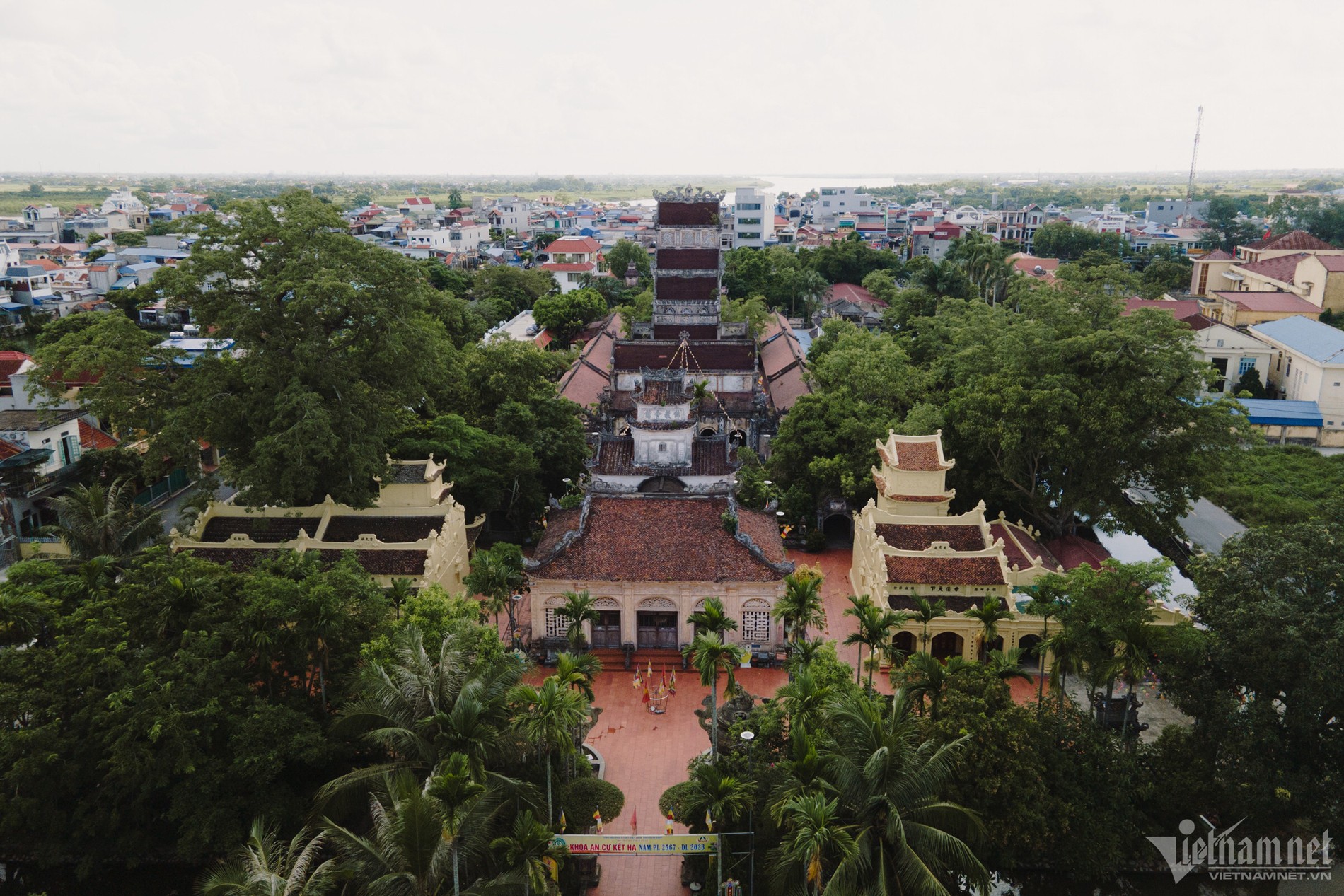 co le pagoda.jpg1.jpg
co le pagoda.jpg1.jpg
3. What are the Spiritual and Cultural Aspects of Co Le Pagoda?
Co Le Pagoda is not only an architectural marvel but also a significant center for spiritual and cultural activities. Its rich history and unique traditions make it a compelling destination for those interested in Vietnamese culture and Buddhism.
3.1. How Does Co Le Pagoda Blend Buddhism and Local Traditions?
Co Le Pagoda seamlessly blends Buddhist teachings with local Vietnamese traditions. While it serves as a place of worship for Buddhist followers, it also incorporates elements of Vietnamese folk religion, such as the worship of local saints and deities. The pagoda’s layout, with Buddha in the front and Saints in the back, reflects this syncretic approach.
3.2. What Role Does Saint Nguyen Minh Khong Play at Co Le Pagoda?
Saint Nguyen Minh Khong is a central figure at Co Le Pagoda. He was a revered monk and healer during the Ly Dynasty and is credited with introducing Buddhism to the region. The annual festival commemorates his contributions and honors his spiritual legacy.
3.3. What Spiritual Practices are Common at Co Le Pagoda?
Visitors to Co Le Pagoda can observe and participate in various spiritual practices, including:
- Prayer and Meditation: Devotees often come to the pagoda to offer prayers, meditate, and seek blessings from the Buddha and other deities.
- Offerings: Making offerings of flowers, incense, and food is a common practice to show respect and devotion.
- Recitation of Sutras: Monks and devotees regularly recite Buddhist scriptures (sutras) to promote spiritual growth and well-being.
3.4. How Does Co Le Pagoda Contribute to the Local Community?
Co Le Pagoda plays a vital role in the local community by providing a center for religious and cultural activities. It also contributes to local tourism, attracting visitors and generating income for local businesses. According to local reports, the pagoda also engages in charitable activities, such as providing food and support to those in need.
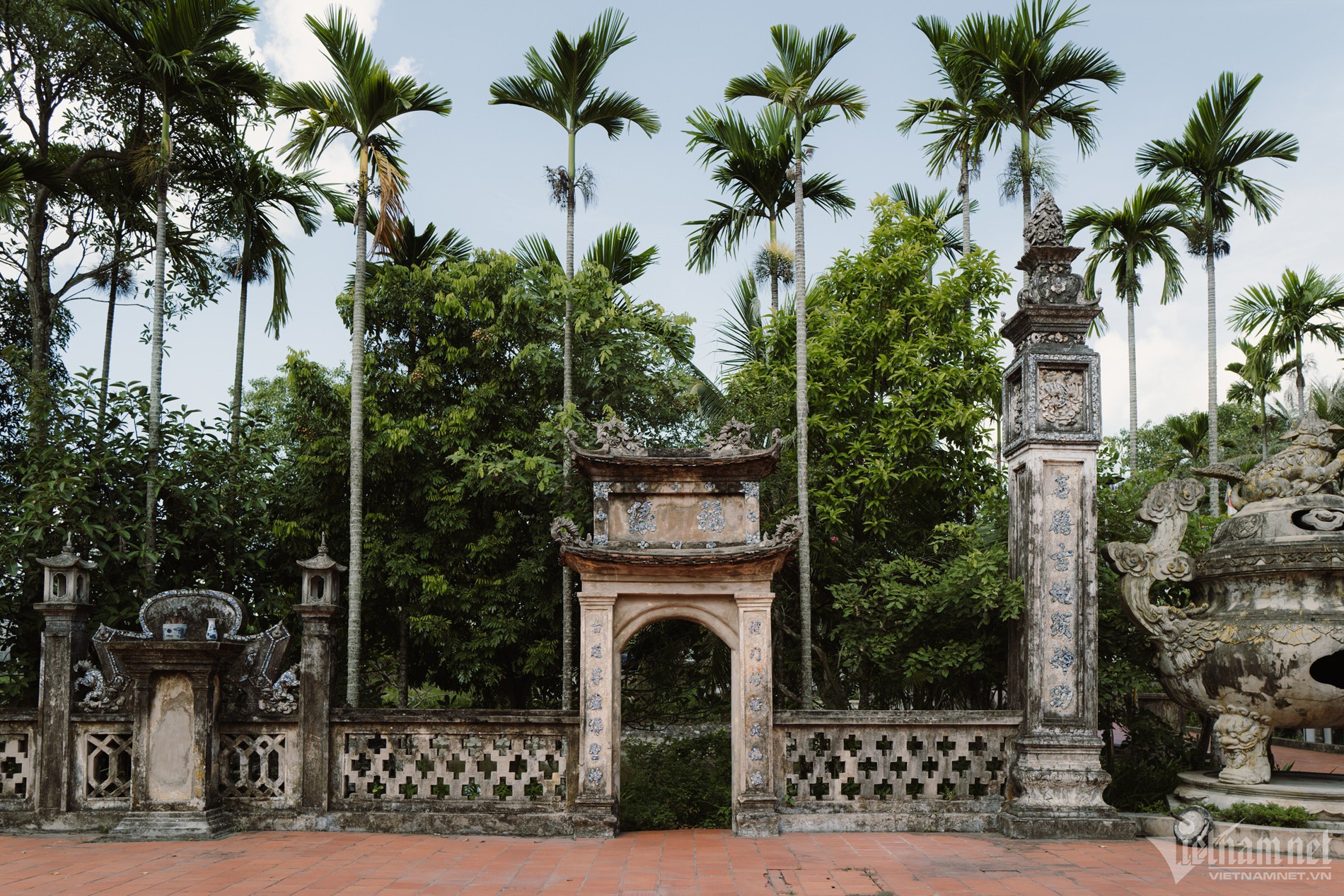 co le pagoda.jpg2.jpg
co le pagoda.jpg2.jpg
4. What is the Nine-Story Lotus Tower?
The Nine-Story Lotus Tower, also known as the Cuu Pham Lien Hoa Tower, is one of the most iconic structures at Co Le Pagoda. Standing 32 meters tall, it symbolizes the nine celestial realms in Buddhist cosmology.
4.1. Why is the Lotus Tower Significant?
The Lotus Tower is significant for several reasons:
- Symbolism: The lotus flower is a powerful symbol in Buddhism, representing purity, enlightenment, and spiritual awakening. The nine stories represent the nine levels of spiritual attainment.
- Architecture: The tower’s unique design, constructed entirely from traditional materials like lime, bricks, sand, molasses, and salt, is a testament to the ingenuity of Vietnamese artisans.
- Panoramic Views: Visitors who climb the 98 steps to the top of the tower are rewarded with panoramic views of the pagoda grounds and the surrounding countryside.
4.2. How Can I Climb the Lotus Tower?
Climbing the Lotus Tower is a memorable experience. A spiral staircase with 98 steps leads to the top. Visitors should be prepared for a somewhat strenuous climb, but the views from the top are well worth the effort.
4.3. What Can I See From the Top of the Lotus Tower?
From the top of the Lotus Tower, you can enjoy breathtaking views of:
- Co Le Pagoda Grounds: A comprehensive view of the entire pagoda complex, including the main buildings, gardens, and courtyards.
- Surrounding Countryside: Expansive views of the lush rice paddies, villages, and waterways that characterize the Nam Dinh region.
- Local Life: A glimpse into the daily life of the local community, with farmers working in the fields and boats navigating the rivers.
4.4. Are There Any Restrictions on Climbing the Lotus Tower?
While the Lotus Tower is generally open to visitors, there may be restrictions during certain times, such as during religious ceremonies or inclement weather. It’s advisable to check with the pagoda staff before attempting to climb the tower.
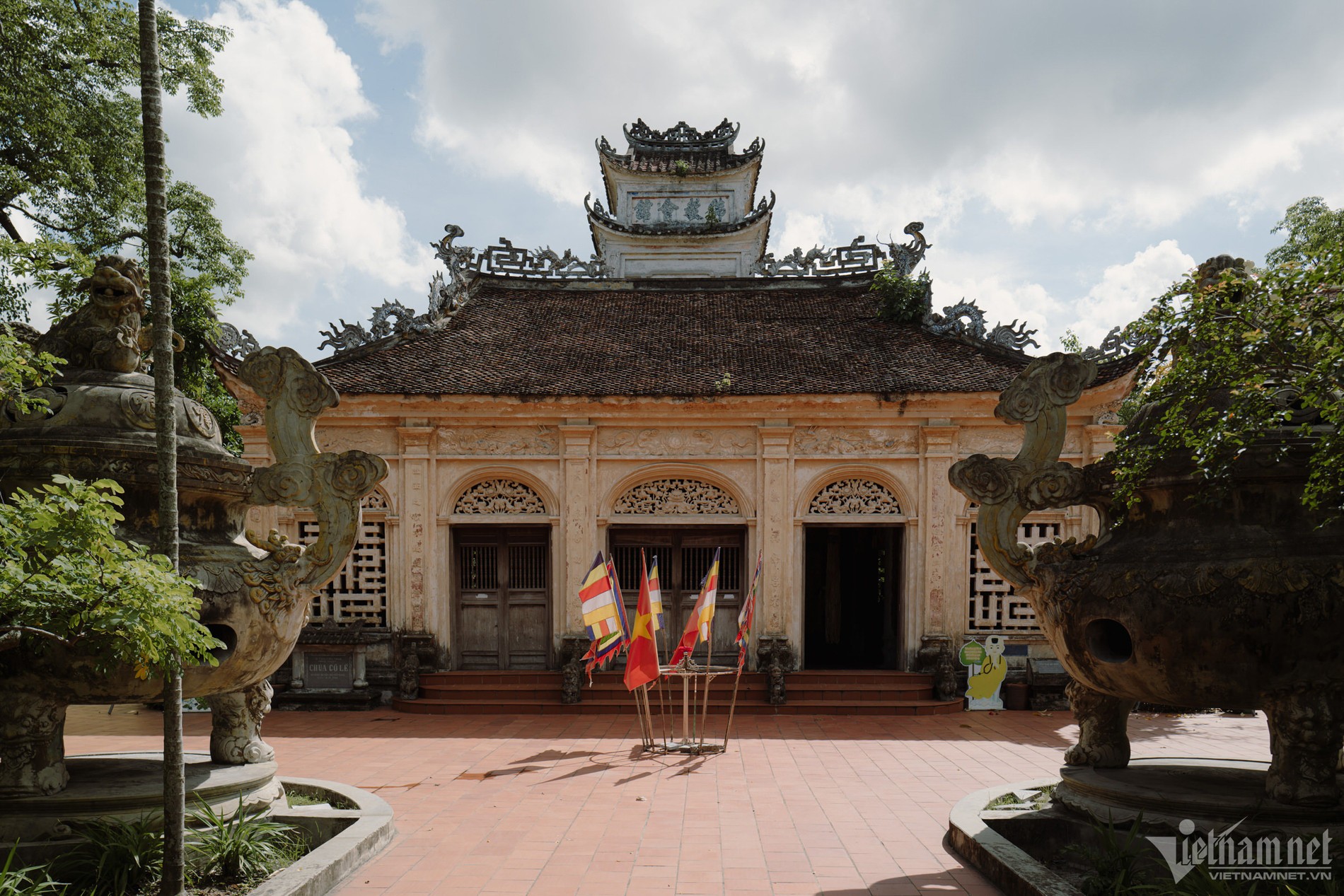 co le pagoda.jpg3.jpg
co le pagoda.jpg3.jpg
5. What is the Story Behind the Giant Bronze Bell?
The Dai Hong Chung, or Great Bronze Bell, at Co Le Pagoda is one of the largest ancient bronze bells in Vietnam. It has a fascinating history and symbolizes resilience and cultural preservation.
5.1. How Big is the Dai Hong Chung Bell?
The Dai Hong Chung bell is an impressive piece of craftsmanship, measuring:
- Height: 4.2 meters
- Diameter: 2.2 meters
- Thickness: 8 centimeters
5.2. When Was the Bell Cast?
The bell was cast in 1936, with significant contributions from the local Buddhist community. According to historical records, many followers donated gold jewelry, which was melted into the bell during its creation, symbolizing their devotion.
5.3. Why Has the Bell Never Been Rung?
Despite its size and sacred significance, the bell has never been rung. Shortly after it was cast, Vietnam’s resistance war broke out. Fearing its destruction by invaders, locals submerged the bell in a lake near the pagoda for safekeeping.
5.4. When Was the Bell Recovered?
The bell remained submerged until 1954, after the war had ended. It was then retrieved and placed on a stone pedestal, where it remains today. The bell’s survival is a testament to the community’s commitment to preserving their cultural heritage.
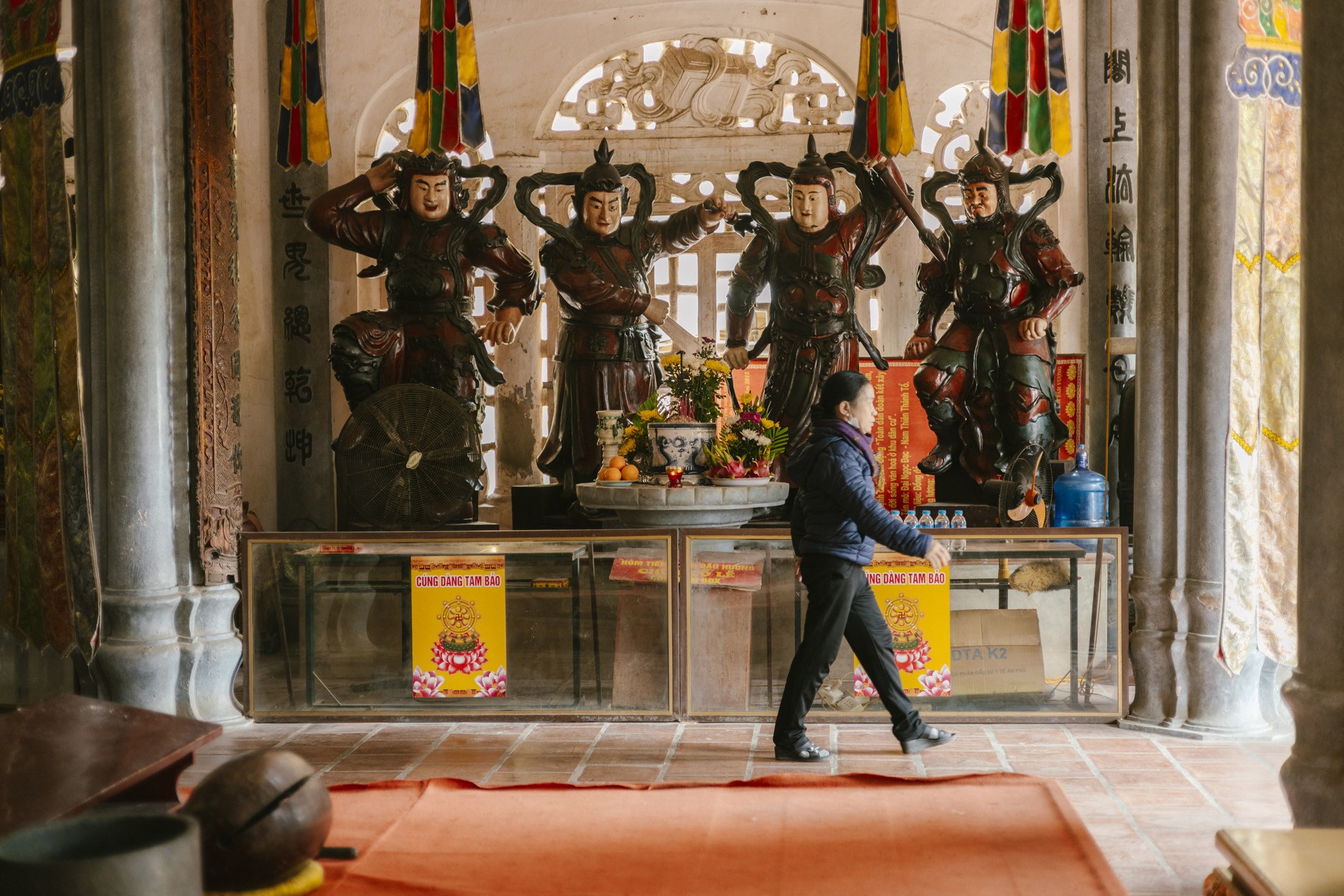 co le pagoda.jpg4.jpg
co le pagoda.jpg4.jpg
6. How Can SIXT.VN Enhance My Visit to Co Le Pagoda?
SIXT.VN offers a range of services to make your trip to Co Le Pagoda and other destinations in Vietnam seamless and enjoyable. From airport transfers to hotel bookings, SIXT.VN ensures a hassle-free travel experience.
6.1. What Services Does SIXT.VN Provide?
SIXT.VN provides a comprehensive suite of travel services, including:
- Airport Transfers: Reliable and comfortable transportation from Noi Bai International Airport (HAN) to Nam Dinh and other destinations.
- Hotel Bookings: A wide selection of hotels to suit every budget and preference.
- Tour Packages: Guided tours to Co Le Pagoda and other attractions in Vietnam.
- Car Rentals: Flexible car rental options for those who prefer to explore at their own pace.
- Flight Bookings: Assistance with booking domestic and international flights.
6.2. How Does SIXT.VN Ensure a Convenient Travel Experience?
SIXT.VN focuses on providing convenience and reliability at every step of your journey:
- Easy Booking: Our online platform allows you to book services quickly and easily.
- 24/7 Customer Support: Our dedicated support team is available around the clock to assist with any queries or concerns.
- Professional Drivers: Our drivers are experienced and knowledgeable about the local area, ensuring safe and efficient transportation.
- Customized Itineraries: We can help you create personalized itineraries tailored to your interests and preferences.
6.3. What are the Benefits of Using SIXT.VN for My Trip?
Using SIXT.VN for your trip to Co Le Pagoda offers numerous benefits:
- Convenience: Streamlined booking and travel arrangements save you time and effort.
- Reliability: Dependable services ensure a smooth and stress-free travel experience.
- Expertise: Our local knowledge and expertise help you discover the best of Vietnam.
- Value: Competitive pricing and special offers provide excellent value for your money.
6.4. How Can I Book Services with SIXT.VN?
Booking services with SIXT.VN is simple:
- Visit our website: SIXT.VN.
- Select your desired services: Choose from airport transfers, hotel bookings, tour packages, and more.
- Enter your travel details: Provide your dates, destinations, and preferences.
- Review and confirm your booking: Ensure all details are correct and confirm your reservation.
- Enjoy your trip: Let SIXT.VN take care of the rest, ensuring a seamless and memorable travel experience.
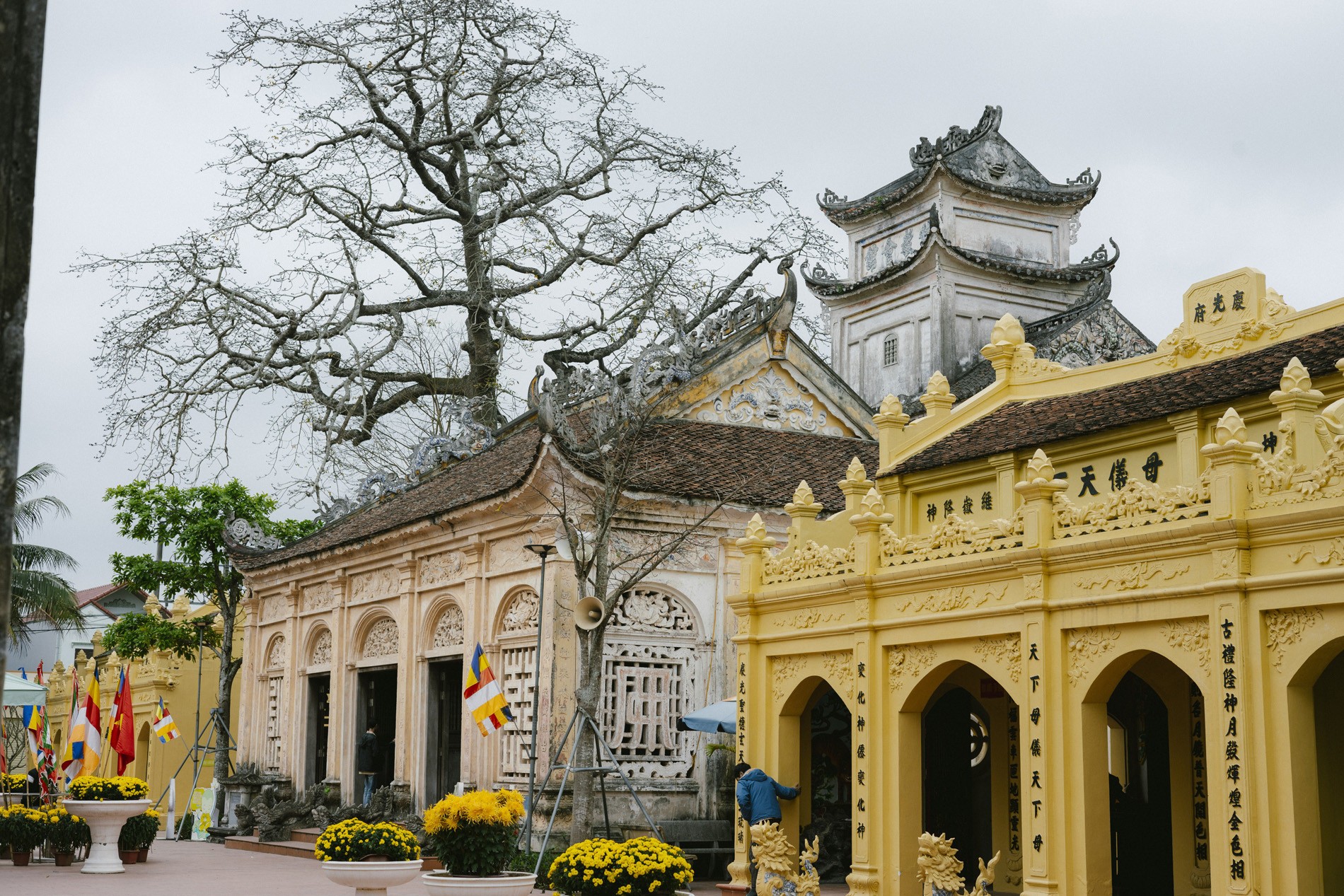 co le pagoda.jpg5.jpg
co le pagoda.jpg5.jpg
7. What Other Attractions are Near Co Le Pagoda?
Nam Dinh province offers a variety of attractions beyond Co Le Pagoda. Exploring these nearby sites can enrich your travel experience and provide a deeper understanding of the region’s culture and history.
7.1. What are Some Notable Pagodas and Temples in Nam Dinh?
Besides Co Le Pagoda, Nam Dinh is home to several other notable religious sites:
- Keo Pagoda (Than Quang Tu): Known for its ancient architecture and serene atmosphere, Keo Pagoda is one of the oldest and most beautiful pagodas in Vietnam.
- Pho Minh Pagoda: Famous for its Pho Minh Tower, this pagoda is a significant historical and cultural landmark.
- Tran Temple: Dedicated to the Tran Dynasty emperors, this temple is a site of great historical importance and hosts a major festival each year.
7.2. What Historical Sites Can I Visit?
Nam Dinh is rich in historical sites that offer insights into Vietnam’s past:
- Tran Dynasty Temple Complex: This complex includes the Thien Truong Temple and Co Trach Temple, commemorating the Tran Dynasty’s contributions to Vietnamese history.
- Nam Dinh Citadel: Explore the remnants of the ancient citadel, which played a crucial role in the region’s defense.
7.3. Are There Any Natural Attractions Nearby?
For those seeking natural beauty, Nam Dinh offers:
- Xuan Thuy National Park: A coastal wetland area that is a haven for migratory birds and diverse ecosystems.
- Hai Hau Beach: A serene beach where you can relax and enjoy the coastal scenery.
7.4. How Can I Plan a Day Trip to These Attractions?
Planning a day trip to these attractions is easy with SIXT.VN:
- Consult our tour packages: SIXT.VN offers guided tours that include transportation and visits to multiple attractions in Nam Dinh.
- Rent a car: Opt for a car rental to explore the region at your own pace. SIXT.VN provides flexible rental options to suit your needs.
- Utilize local transportation: Hire a taxi or motorbike to travel between attractions. Be sure to negotiate the fare beforehand.
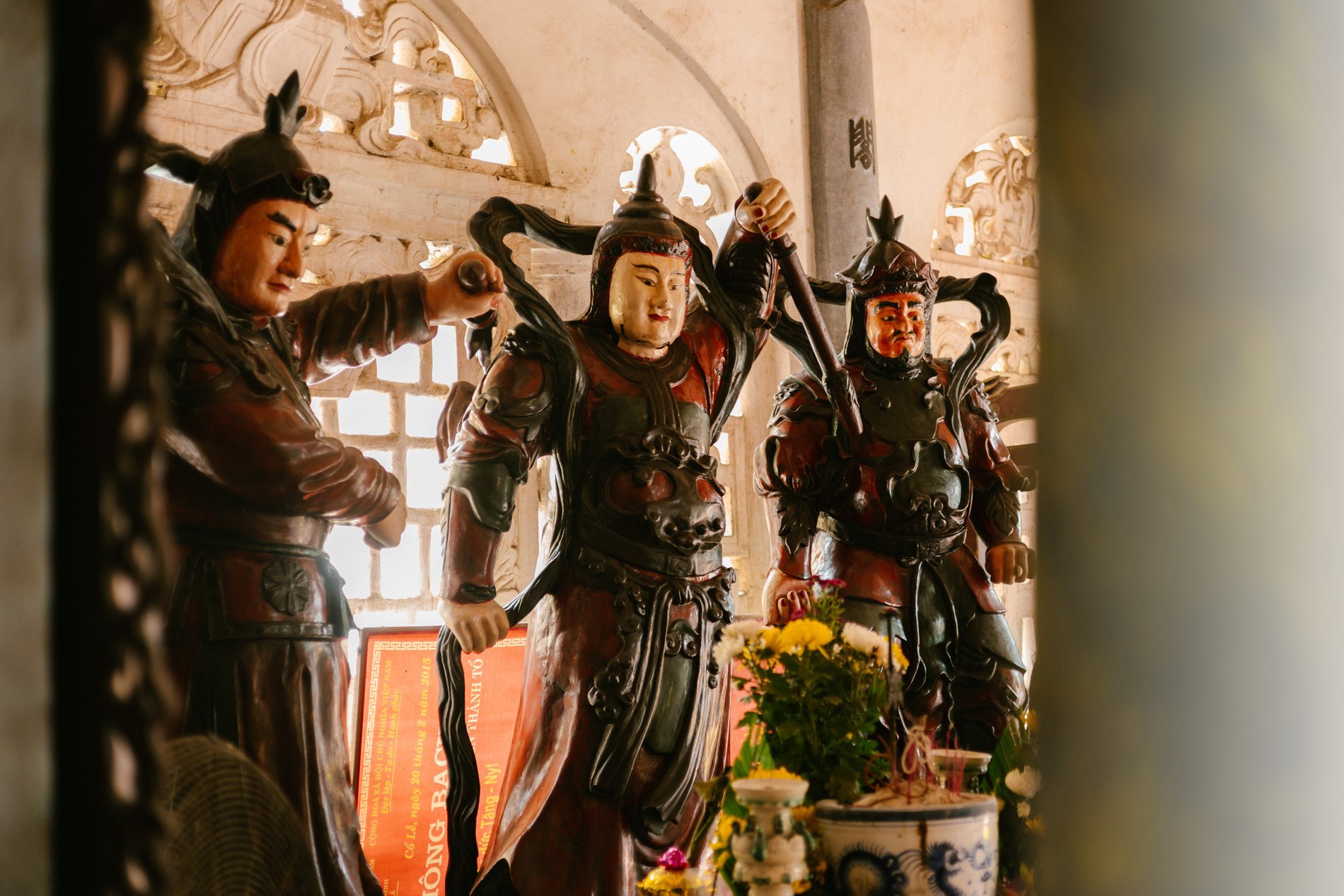 co le pagoda.jpg6.jpg
co le pagoda.jpg6.jpg
8. What Should I Know Before Visiting Co Le Pagoda?
Planning a visit to Co Le Pagoda requires some preparation to ensure a respectful and enjoyable experience. Here are some essential things to know before you go:
8.1. What is the Best Time to Visit?
The best time to visit Co Le Pagoda is during the dry season, which typically runs from November to April. The weather is more pleasant, making it ideal for exploring the pagoda and surrounding areas. If you plan to attend the Co Le Pagoda Festival, remember that it takes place from the 13th to the 16th day of the ninth lunar month.
8.2. What Should I Wear When Visiting?
When visiting Co Le Pagoda, it’s important to dress respectfully. Here are some guidelines:
- Cover your shoulders and knees: Avoid wearing sleeveless tops, shorts, or skirts that are too short.
- Wear comfortable shoes: You’ll be doing a lot of walking, so comfortable shoes are essential.
- Avoid revealing clothing: Choose modest clothing that is appropriate for a religious site.
8.3. Are There Any Customs I Should Be Aware Of?
Respecting local customs is crucial when visiting Co Le Pagoda:
- Remove your shoes: Take off your shoes before entering the main prayer halls.
- Be quiet and respectful: Maintain a quiet and respectful demeanor inside the pagoda.
- Ask for permission before taking photos: Some areas may have restrictions on photography, so it’s best to ask before taking pictures.
- Do not touch sacred objects: Avoid touching statues, altars, or other sacred objects.
8.4. What Language is Spoken in Nam Dinh?
The primary language spoken in Nam Dinh is Vietnamese. While some locals may speak a little English, it’s helpful to learn a few basic Vietnamese phrases to enhance your interactions. Consider using a translation app or carrying a phrasebook.
 co le pagoda.jpg7.jpg
co le pagoda.jpg7.jpg
9. What Types of Accommodations are Available Near Co Le Pagoda?
Finding the right accommodation is essential for a comfortable trip. Here are some options available near Co Le Pagoda, with SIXT.VN offering convenient booking services:
9.1. What Types of Hotels are Available in Nam Dinh?
Nam Dinh offers a range of hotels to suit different budgets and preferences:
- Luxury Hotels: Offering premium amenities, fine dining, and exceptional service.
- Mid-Range Hotels: Providing comfortable accommodations with essential amenities at reasonable prices.
- Budget Hotels: Offering basic accommodations for budget-conscious travelers.
9.2. Are There Any Guesthouses or Homestays Nearby?
For a more local and immersive experience, consider staying in a guesthouse or homestay:
- Guesthouses: Smaller establishments offering personalized service and a cozy atmosphere.
- Homestays: Staying with a local family, providing a unique opportunity to experience Vietnamese culture firsthand.
9.3. How Can SIXT.VN Help Me Book My Accommodation?
SIXT.VN simplifies the process of finding and booking accommodations:
- Visit our website: SIXT.VN.
- Select “Hotel Bookings”: Browse a wide selection of hotels, guesthouses, and homestays in Nam Dinh.
- Enter your travel dates and preferences: Filter your search by price, location, amenities, and more.
- Review and confirm your booking: Ensure all details are correct and confirm your reservation.
9.4. What Amenities Should I Look For When Booking?
When booking accommodations, consider the following amenities:
- Free Wi-Fi: Essential for staying connected and planning your itinerary.
- Air Conditioning: Important for comfort, especially during the hot season.
- On-Site Restaurant: Convenient for meals and snacks.
- 24-Hour Front Desk: Helpful for late arrivals and any assistance you may need.
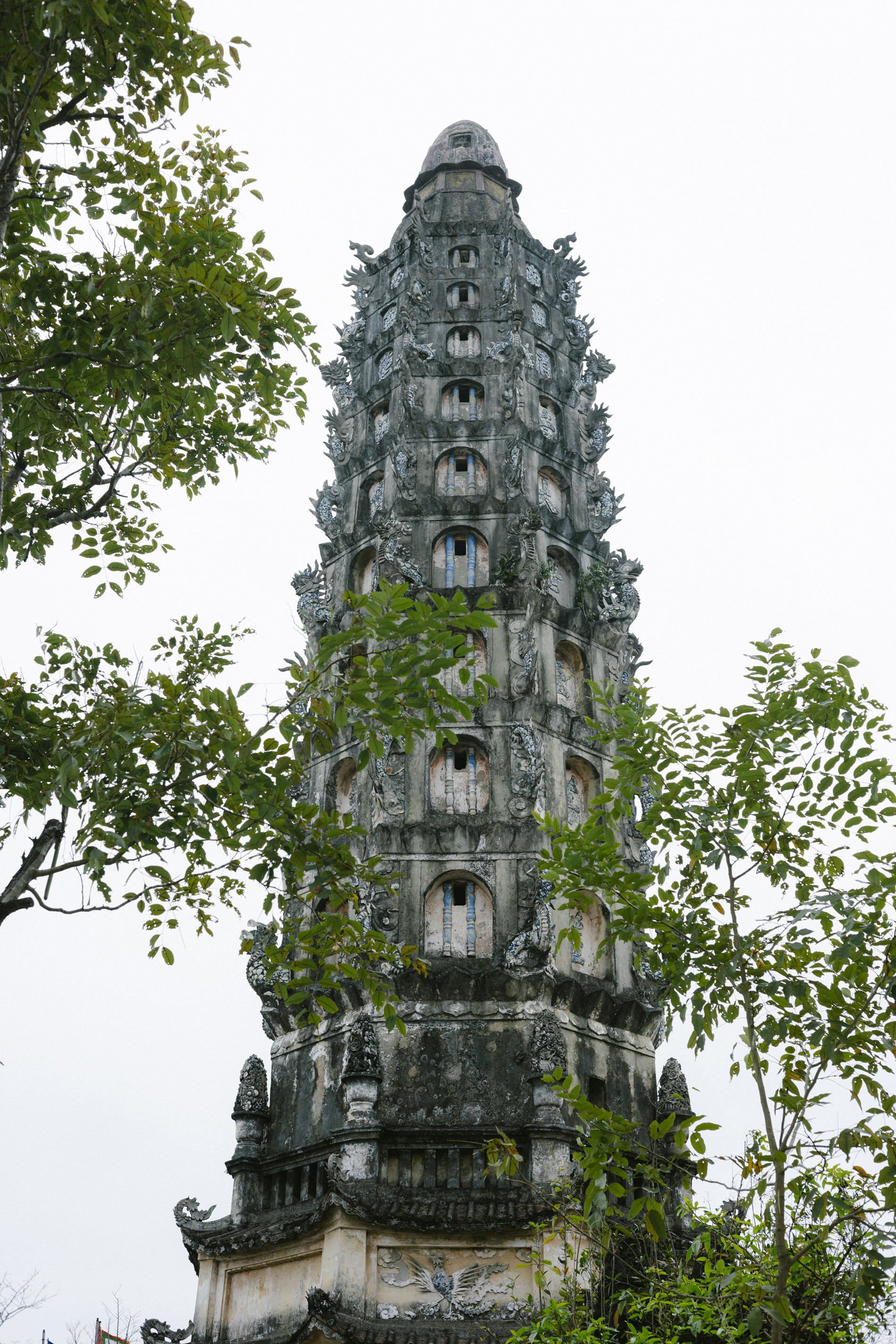 co le pagoda.jpg8.jpg
co le pagoda.jpg8.jpg
10. What Local Cuisine Should I Try Near Co Le Pagoda?
Exploring the local cuisine is an integral part of any travel experience. Nam Dinh offers a variety of delicious dishes that you shouldn’t miss.
10.1. What are Some Popular Dishes in Nam Dinh?
Nam Dinh is known for its unique culinary specialties:
- Pho Bo Nam Dinh: A local variation of the famous Vietnamese noodle soup, featuring flavorful broth and tender beef.
- Banh Xeo: Crispy savory pancakes filled with shrimp, pork, and bean sprouts, served with fresh herbs and dipping sauce.
- Goi Ca: Fresh raw fish salad mixed with herbs, spices, and roasted rice powder, offering a unique and refreshing taste.
10.2. Where Can I Find Authentic Local Food?
To experience authentic Nam Dinh cuisine, visit:
- Local Markets: Explore the vibrant markets for street food and local delicacies.
- Family-Run Restaurants: Seek out small, family-owned eateries for traditional dishes made with fresh ingredients.
- Street Food Stalls: Sample a variety of snacks and dishes from street food vendors.
10.3. Are There Any Food Tours Available?
Consider joining a food tour for a guided culinary experience:
- Local Guides: Hire a local guide to take you to the best food spots and introduce you to the region’s culinary heritage.
- Organized Tours: Look for organized food tours that include tastings of various dishes and insights into local food culture.
10.4. What Should I Know About Vietnamese Dining Etiquette?
Respecting dining etiquette enhances your culinary experience:
- Use Chopsticks: Learn how to use chopsticks properly.
- Share Dishes: Sharing dishes is common, so try a variety of foods.
- Wait to be Seated: Wait for the host to seat you before sitting down.
- Say “Cam On” (Thank You): Show your appreciation by saying “cam on” after the meal.
 co le pagoda.jpg9.jpg
co le pagoda.jpg9.jpg
FAQ about Co Le Pagoda and Its Festival
1. Is Co Le Pagoda worth visiting?
Yes, Co Le Pagoda is definitely worth visiting due to its unique blend of Eastern and Western architectural styles and its rich cultural and spiritual significance. The pagoda also hosts an annual festival that provides a vibrant and immersive cultural experience.
2. How far is Co Le Pagoda from Hanoi?
Co Le Pagoda is approximately 120 kilometers (75 miles) southeast of Hanoi. The journey takes about 2-3 hours by car.
3. Can I visit Co Le Pagoda on a day trip from Hanoi?
Yes, it is possible to visit Co Le Pagoda on a day trip from Hanoi, but it will be a long day. Consider starting early in the morning to make the most of your time.
4. Is there an entrance fee to visit Co Le Pagoda?
No, there is usually no entrance fee to visit Co Le Pagoda, but donations are welcome.
5. What should I wear when visiting Co Le Pagoda?
Dress respectfully by covering your shoulders and knees. Avoid wearing revealing clothing.
6. Can I take photos inside Co Le Pagoda?
Photography may be restricted in some areas, so it’s best to ask for permission before taking photos.
7. Are there any hotels near Co Le Pagoda?
Yes, there are several hotels and guesthouses in Nam Dinh city, which is about 30 minutes away from Co Le Pagoda.
8. What are the main events during the Co Le Pagoda Festival?
The main events include Buddhist ceremonies, traditional spiritual performances, cultural and folk games, and dragon boat racing.
9. How can I get to Co Le Pagoda from Noi Bai International Airport?
You can hire a private car or take a train from Hanoi to Nam Dinh city, then hire a local taxi or bus to reach Co Le Pagoda. SIXT.VN provides airport transfer services for a convenient option.
10. Is it necessary to speak Vietnamese to visit Co Le Pagoda?
While it’s not essential, knowing a few basic Vietnamese phrases can enhance your experience and interactions with locals.
Visiting Co Le Pagoda offers a unique glimpse into Vietnam’s rich cultural and spiritual heritage. With its stunning architecture, vibrant festival, and tranquil atmosphere, it’s a destination that promises a memorable travel experience. Let SIXT.VN take care of your travel needs, from airport transfers and hotel bookings to personalized tour packages. Contact us today at +84 986 244 358 or visit our website at SIXT.VN to start planning your adventure. Address: 260 Cau Giay, Hanoi, Vietnam.
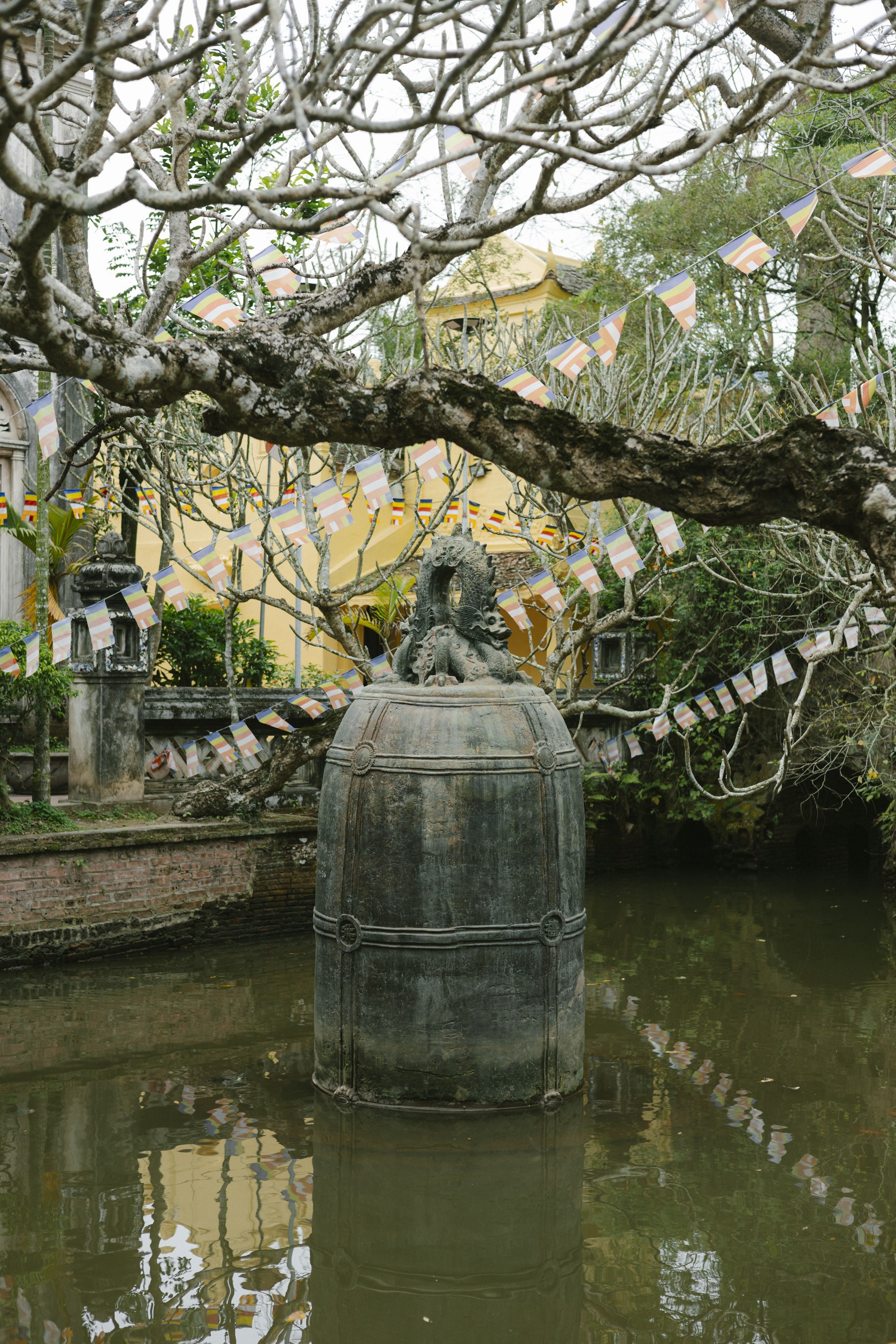 co le pagoda.jpg10.jpg
co le pagoda.jpg10.jpg
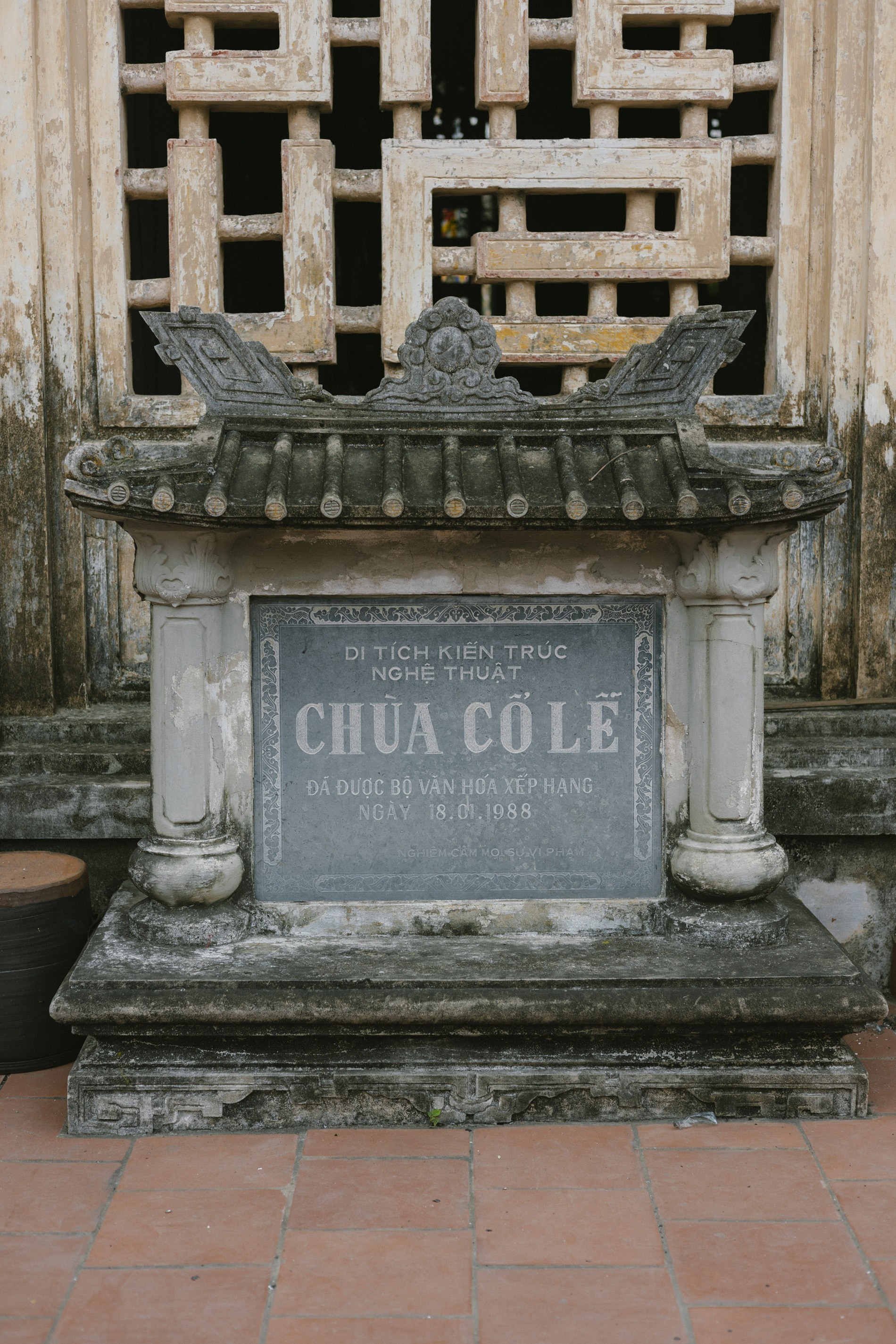 co le pagoda.jpg11.jpg
co le pagoda.jpg11.jpg



